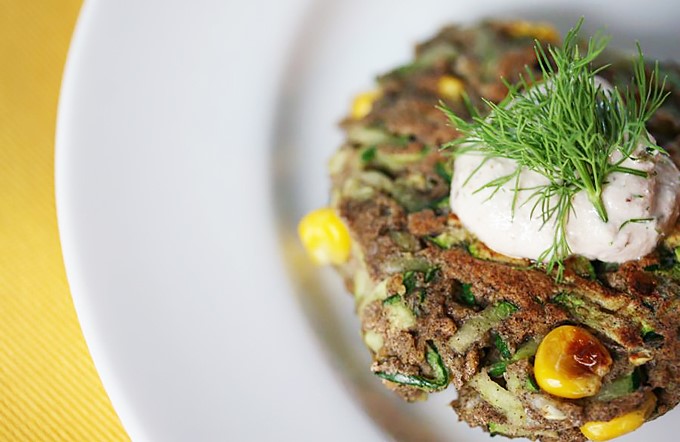
I don’t know about you, but I was taught that protein comes from meat. So where do you get your protein on a plant-based diet?
Everywhere. Protein is found in every single whole plant food on the planet. That said, some contain more protein than others. Here are the five plant-based food groups, from the most to least protein (on average):
- Legumes (Beans, peas, and lentils): 12+ grams of protein per cup
- Grains: 5-10 grams per cup cooked
- Nuts and Seeds: 5-10 grams per quarter-cup
- Vegetables: 1-6 grams per cup
- Fruits: trace-4 grams per cup
Note: Protein data is from the USDA National Nutrient Database for Standard Reference, Release 28, unless otherwise noted.1
By eating a variety of foods from all of these groups, you can easily get all the protein you need, including essential amino acids. To get you started, I’ve listed 21 plant-based protein standouts below—including foods most people think of as “just carbs.” Given that the recommended dietary allowance (RDA) for a 125-pound woman is only 46 grams of protein per day, you can see how easy it is to meet your needs eating plants. Whether you’re a plant-based newbie or an old pro, get ready for some surprises!
1. Bread

Most people think of bread as a carb, but whole-grain bread in particular is rich in plant-based protein. For example, two slices of whole-wheat bread contain 8 grams of protein—more than an egg! Note that the protein content of gluten-free breads can vary; be sure to check the nutrition label.
2. Peanut butter
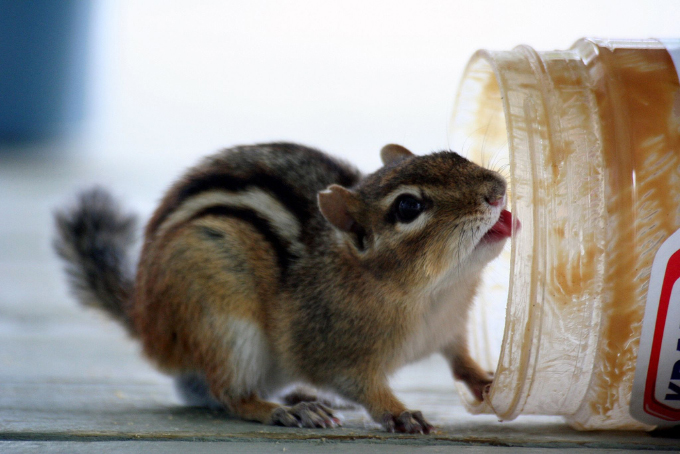
This chipmunk knows where to get the goods.
Lowly peanut butter is actually a protein powerhouse, with 7 grams in just 2 tablespoons. It’s also rich in vitamin E, magnesium, and potassium. (If you’re watching your fat or calories, consider a low fat version.) Make yourself a peanut butter sandwich with whole-wheat bread and you’ve got 15 grams of plant-based protein, with nary a bean in sight.
3. Beans
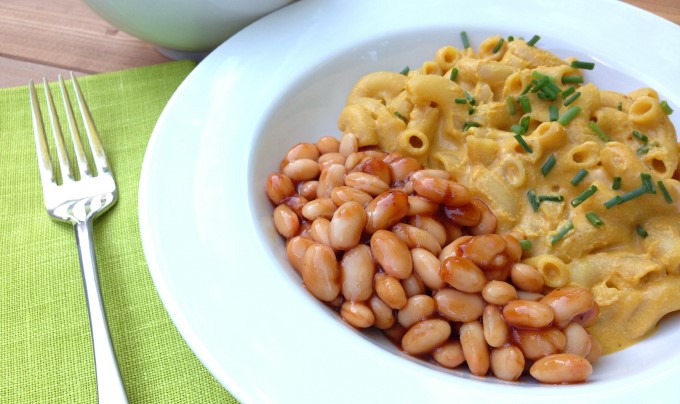
Speaking of beans, they’re what come to mind when most people think of vegan protein sources. And for good reason! Kidney beans, for example, have 16 grams of protein per cup cooked. They’re also powered up with iron, folate, and prebiotics to feed the good microbes in your intestinal tract. What’s more, eating beans can help keep blood sugar stable and help you feel fuller, longer.2 Oh, and did I mention beans are cheap? Enjoy them in 10-minute tacos, this amazing portobello mushroom chili, or even black bean brownies.
4. Corn
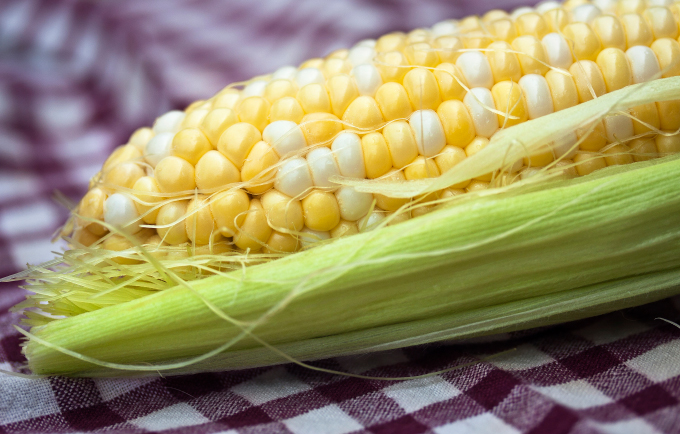
Surprise! Corn has 5 grams of protein per cup. But it’s so much more than a boring side dish. Slice raw sweet corn off the cob for a sweet, crisp, and creamy addition to salads. Or enjoy corn as grits in this scandalously good grits n’ greens casserole.
5. Spinach

Popeye was right: Spinach rocks. Not only does it have 5 grams of protein per cup cooked, but it’s got 36% of the daily value iron, 39% of magnesium, and hefty doses of folate, vitamin B6, and vitamins A, C, and K. I love baby spinach drizzled with poppyseed dressing and topped with dried cranberries, but I’m also a big fan of this fast, low-fat creamed spinach.
6. Edamame
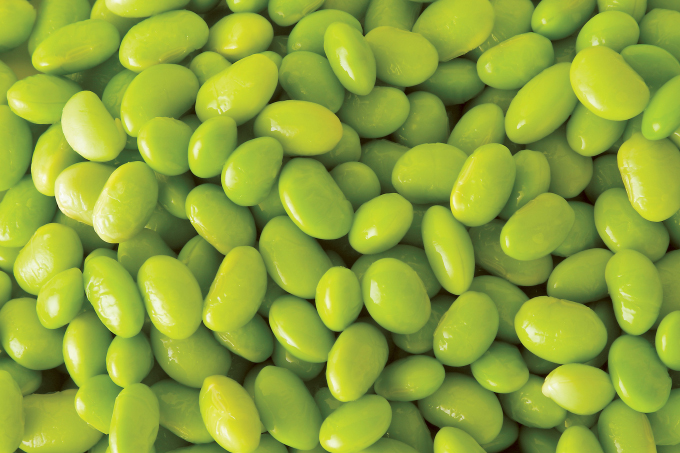
I know, edamame is actually green soybeans, so technically they should fall under beans. However, this sushi-restaurant side dish contains even more protein than most other beans, a whopping 22 grams of protein per cup. Enjoy steamed or boiled and lightly sprinkled with salt, or smash into a dip.
7. Pumpkin seeds
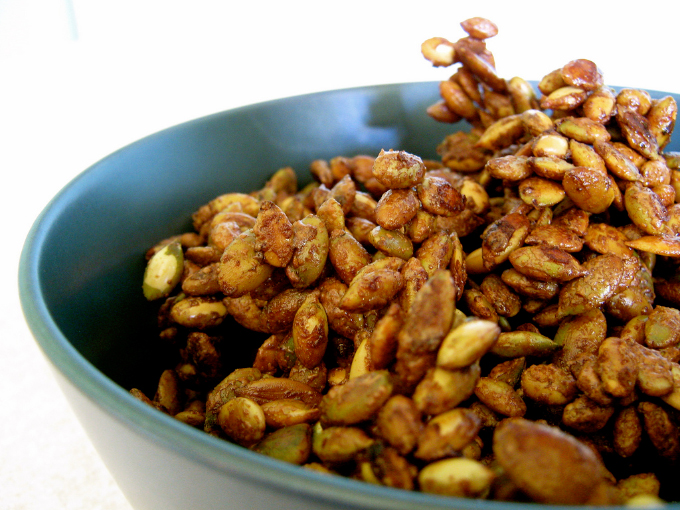
Pumpkin seeds have 10 grams of protein in a quarter-cup serving. They’re also a great source of minerals like iron, magnesium, phosphorus, and zinc. Sprinkle them over a salad to boost absorption of vitamins in the greens.
8. Guava
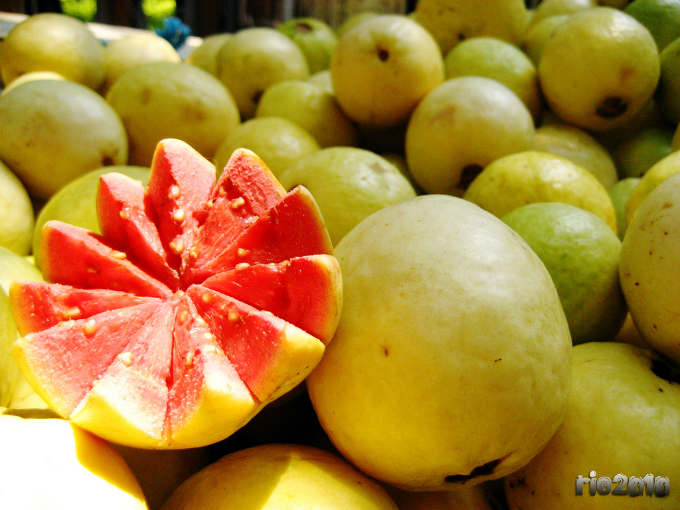
This one was a surprise to me—guava is the highest-protein fruit, with 4 grams of protein per cup. I personally wasn’t sure how to eat a guava, but according to this handy video, you can eat them like apples or cut them in half, sprinkle them with cinnamon, and scoop the flesh out with a spoon. This one’s going on my grocery list!
9. Oatmeal
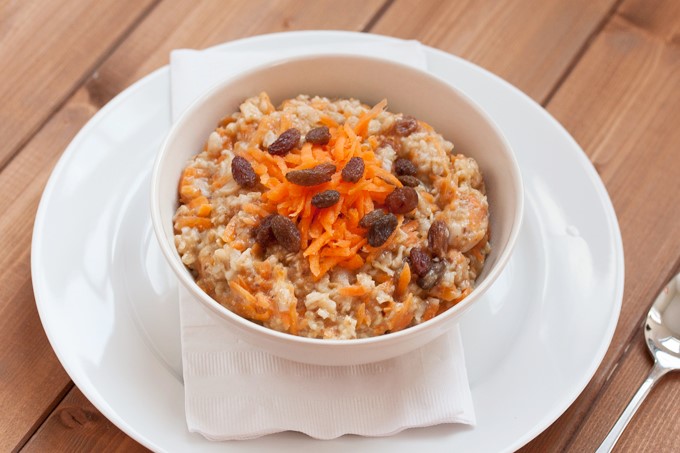
So many people think of oatmeal as “just” a carb, but it’s got lots of protein: 6 grams in a 1-cup serving. Again, that’s the same amount of protein as you’ll find in an egg! Only unlike eggs, oatmeal can actually help lower bad cholesterol. Try the classic cinnamon-raisin version, or try adding cocoa powder, vanilla, and a little sweetener for a healthy breakfast that tastes like dessert.
10. Soy milk
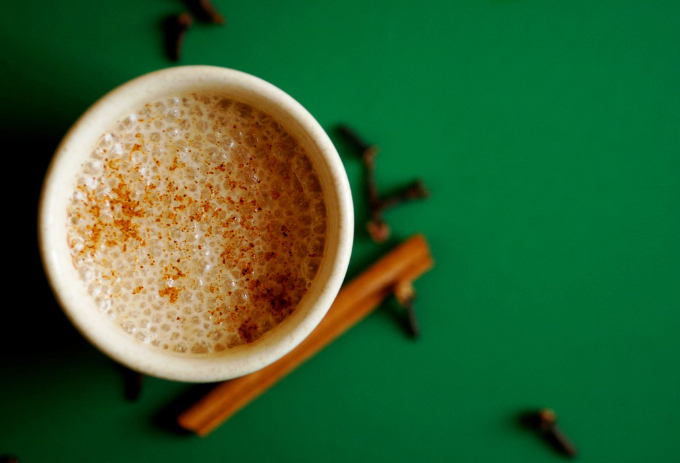
Soymilk also makes awesome no-egg nog
With 7 grams of protein per cup, soy milk is probably the easiest way ever to score plant-based protein. Pour it on your oatmeal for a protein-packed start to the day.
11. Lentils
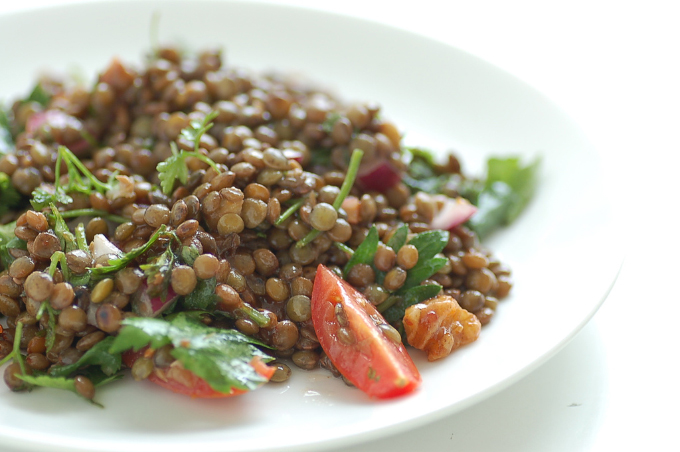
Mild-tasting with a meaty texture, lentils contain 18 grams of protein per cup! They’re tasty in soup to be sure, but they also make a mean taco filling.
12. Potatoes

Didn’t expect to see potatoes on the list, did you? Even I was surprised by their protein content. I always assumed they were just healthy starches! However, a large baked potato has 8 grams of protein—again, more than an egg. What’s more, boiled potatoes are the most “satiating” food you can eat—that is, they make you feel fuller, longer. They’re more satiating than eggs, beans, and even beef!3
13. Pasta
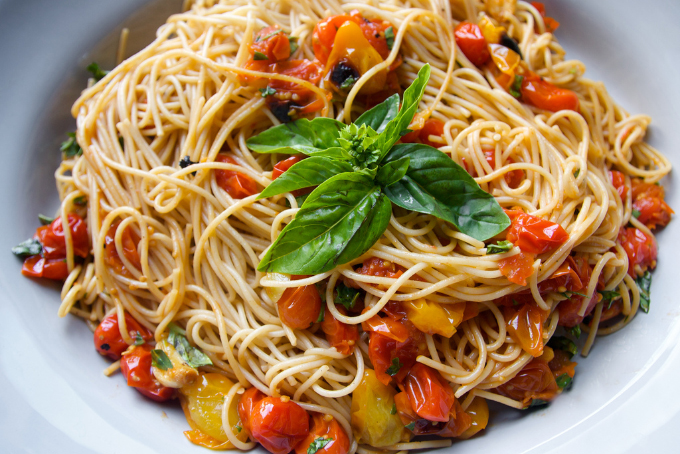
Pasta, far from being just starch, is actually fairly rich in protein. For example, a 1-cup serving of cooked whole-wheat pasta has 7 grams of protein—again, more than an egg. Gluten free varieties, such as quinoa and corn, don’t have as much protein, but still contain a respectable 5 grams per cup of cooked, packed spaghetti.
14. Nutritional yeast
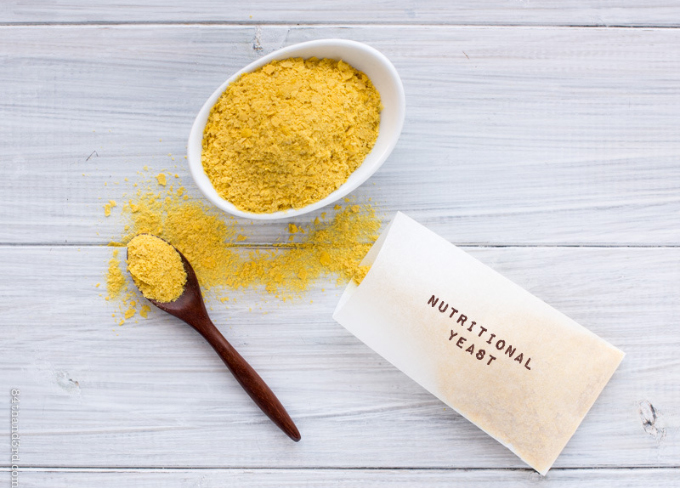
Affectionately known as “nooch,” nutritional yeast is used to give dishes a cheesy, savory flavor. (See “What the Heck is Nutritional Yeast” by Susan Voisin for details.) I use nutritional yeast in my vegetarian pot pie, pumpkin mac n’ cheeze, and stirred into bean dips for an extra flavor kick. The best part? It’s not just delicious—2 heaping tablespoons contains a whopping 9 grams of protein. Just be sure to buy a brand without synthetic folic acid (like this one or this one), as synthetic folic acid is linked to breast cancer risk.
15. Green peas

Sweet, simple peas are a great source of plant-based protein, with nearly 9 grams of protein per cup cooked. They’re also rich in vitamin A, vitamin C, vitamin K, and iron.
16. Portobello mushrooms
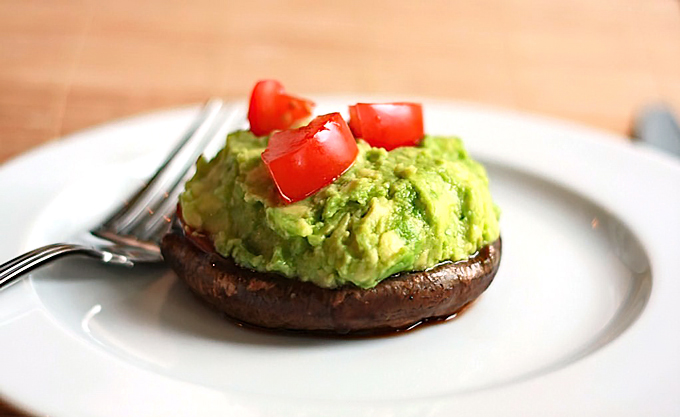
These savory burger stand-ins contain protein in their own right—4 grams in 1 cup of grilled slices. They also contain breast cancer fighters called aromatase inhibitors.4 Don’t relegate portobellos to just grilling, though. They taste amazing in this hearty chili recipe!
17. Tofu
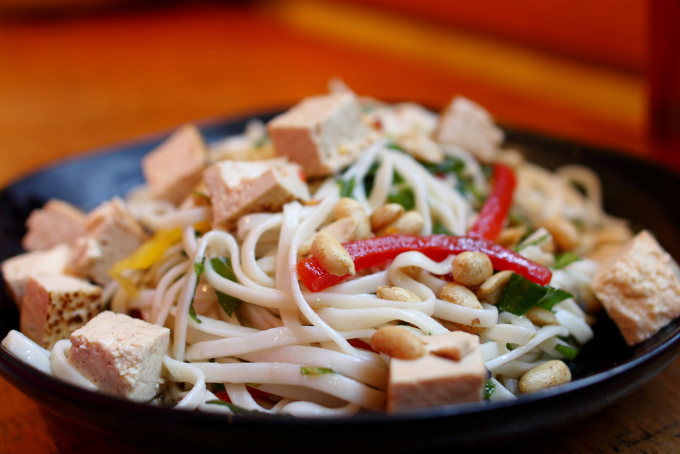
Made from soybeans, tofu is extraordinarily high in protein with 12 grams per ½ cup. From silken to extra firm, tofu is a cooking chameleon, absorbing the flavor of whatever it’s prepared with. As a result, it can be used to make everything from cheesecake to scrambled “eggs.” And while some people have concerns about soy and breast cancer, the best data we have shows that whole soy (not supplements) may actually be protective against breast cancer.5
18. Broccoli

Calorie for calorie, broccoli actually contains more protein than many kinds of beef. (0.11 g/cal for boiled broccoli vs. 0.10g/cal for a broiled 80% lean beef patty, for you accountants out there.) Plus, broccoli packs cancer-fighting nutrients, while beef may actually cause cancer, according to the World Health Organization.6 You’ll score about 6 grams of protein per cup cooked.
19. Quinoa

Beloved as a complete plant-based source (with 8 grams of protein per cup cooked), I actually like quinoa for its nutty flavor and chewy-tender texture. Gluten free, it’s a delicious swap for couscous or kasha in grain-based salads, and it’s also delicious in veggie burgers and this quinoa loaf with spiced date sauce.
20. Almonds
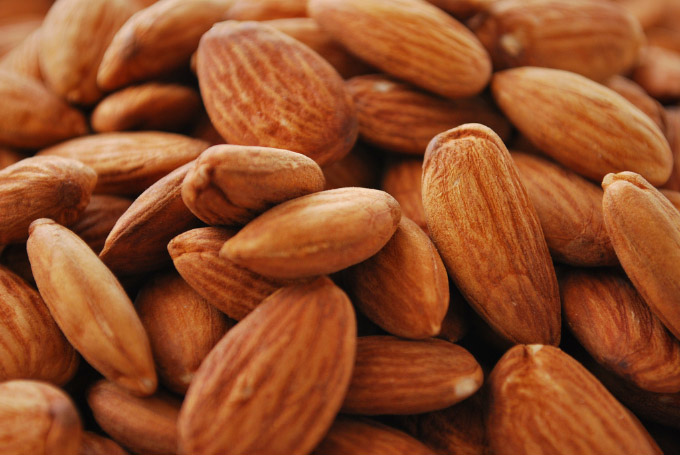
An easy snack, almonds have 8 grams of protein in a quarter cup (a little more than an ounce.) They’re also rich in vitamin E. Slivered toasted almonds are a tasty topper for salads, or enjoy a different side of almonds in this 42-calorie almond milk hot chocolate.
21. Coffee

That’s right: Your morning mug of joe has about 1 gram of protein. (I know, I was surprised too!) It makes sense when you think about it, though—coffee is brewed from beans, right?
Plant-based protein power
There you have it: 21 great plant-based protein sources. The best part? Plants are the safest source of protein available for healthy adults (and kids, too). In fact, protein from plants is consistently linked with lower risk of many diseases, whereas the same can’t be said for animal protein. (See part 2 in the Plant-Based 101 series for details.)
So whether you’re thinking of trying a plant-based diet, you’ve recently started, or you’re an old pro, hopefully you’ve found a great new vegan protein source to try!
Your turn:
Do you have a favorite vegan protein source that didn’t make the list? Tell us what it is—and how you like to enjoy it.
Click here for references and image creditsReferences
- United States Department of Agriculture Agricultural Research Service. USDA National Nutrient Database for Standard Reference, Release 28. http://ndb.nal.usda.gov/ndb/search. Version current: September 2015. Accessed January 13-21, 2016.
- Nilsson A, Johansson E, Ekström L, Björck I. Effects of a brown beans evening meal on metabolic risk markers and appetite regulating hormones at a subsequent standardized breakfast: a randomized cross-over study. PLoS One. 2013;8(4):e59985. doi: 10.1371/journal.pone.0059985. Epub 2013 Apr 5.
- Holt SH, Miller JC, Petocz P, Farmakalidis E. A satiety index of common foods. Eur J Clin Nutr. 1995 Sep;49(9):675-90. [Abstract] http://www.ncbi.nlm.nih.gov/pubmed/7498104.
- Grube BJ, Eng ET, Kao YC, Kwon A, Chen S. White button mushroom phytochemicals inhibit aromatase activity and breast cancer cell proliferation. J Nutr. 2001 Dec;131(12):3288-93. http://jn.nutrition.org/content/131/12/3288.long
- Trock BJ, Hilakivi-Clarke L, Clarke R. Meta-analysis of soy intake and breast cancer risk. J Natl Cancer Inst. 2006 Apr 5;98(7):459-71. http://jnci.oxfordjournals.org/content/98/7/459.long
- World Health Organization. Q&A on the carcinogenicity of the consumption of red meat and processed meat. Available at: http://www.who.int/features/qa/cancer-red-meat/en/.
Image credits
- Peanut butter: “Chipmunk at Birdsall Beach Resort” by Derek Purdy via Flickr Creative Commons
- Bread: “Kamut or Spelt Bread” by H is for Home via Flickr Creative Commons
- Corn: “Corn” by Liz West via Flickr Creative Commons
- Edamame: “Edamame” by United Soybean Board via Flickr Creative Commons
- Pumpkin seeds: “Pepitas” by Christa via Flickr Creative Commons
- Guava: “Brazilian Guava, Ipanema Street Market” by keetr via Flickr Creative Commons
- Soy milk: “Soynog” by Jacqueline via Flickr Creative Commons
- Lentils: “Green Lentil Salad with Walnut Dressing” by Jules via Flickr Creative Commons
- Pasta: “Tomato Basil Pasta!” by Tracy Benjamin via Flickr Creative Commons
- Nutritional yeast: “Nutritional Yeast for Vegan Butter” by JJ via Flickr Creative Commons
- Peas: “Peas_01” by Dayna McIsaac via Flickr Creative Commons
- Portobello mushroom: “Guacamole Portobello Mushroom” by Jennifer via Flickr Creative Commons
- Tofu: “Tofu Salad from Teaism” by Mr.TinDC via Flickr Creative Commons
- Broccoli: “Broccoli med hvidløg og hoisin-sauce” by cyclonebill via Flickr Creative Commons
- Quinoa: “Quinoa Breakfast” by Jennifer via Flickr Creative Commons
- Almonds: “Almonds!” by Harsha K R via Flickr Creative Commons
All other images by Veggie Quest
Note: This is part 4 in our 6-part weekly Plant-Based 101 series. Read Part 3: The Truth About Protein here. Subscribe now to get notifications for the remaining posts plus easy plant-based recipes!
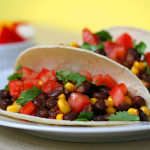

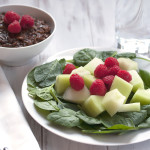

 I'm Lee, an RD thriving on a healthy plant based diet.
I'm Lee, an RD thriving on a healthy plant based diet.
Coffee, corn, guava and potatoes were all big surprises for me! I love this series of posts, Lee 🙂 Stay warm during this snow-pocalypse!
Thanks Amy! You’re super pro veggie/vegan, so if I can surprise you in any way, then mission accomplished. 😀 We’re staying warm here–thankfully we still have power. Hope you’re weathering Snowzilla okay too and that your power stays on!!
Great post, Lee! Thanks! I didn’t know “nooch” had so much protein in it! Always nice to be pleasantly surprised. (Plus, looking at all your tasty photos and recipes made me hungry!) 🙂 xo
Thanks Maria! Yeah, the nooch actually surprised me too, but I took the protein info straight off the Nutrition Facts panel on my container of Dr. Fuhrman brand nutritional yeast. (They didn’t have nooch in the USDA database, go figure. 😉 )